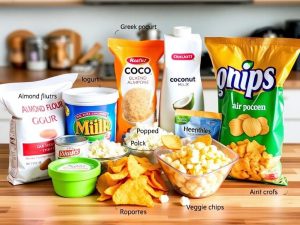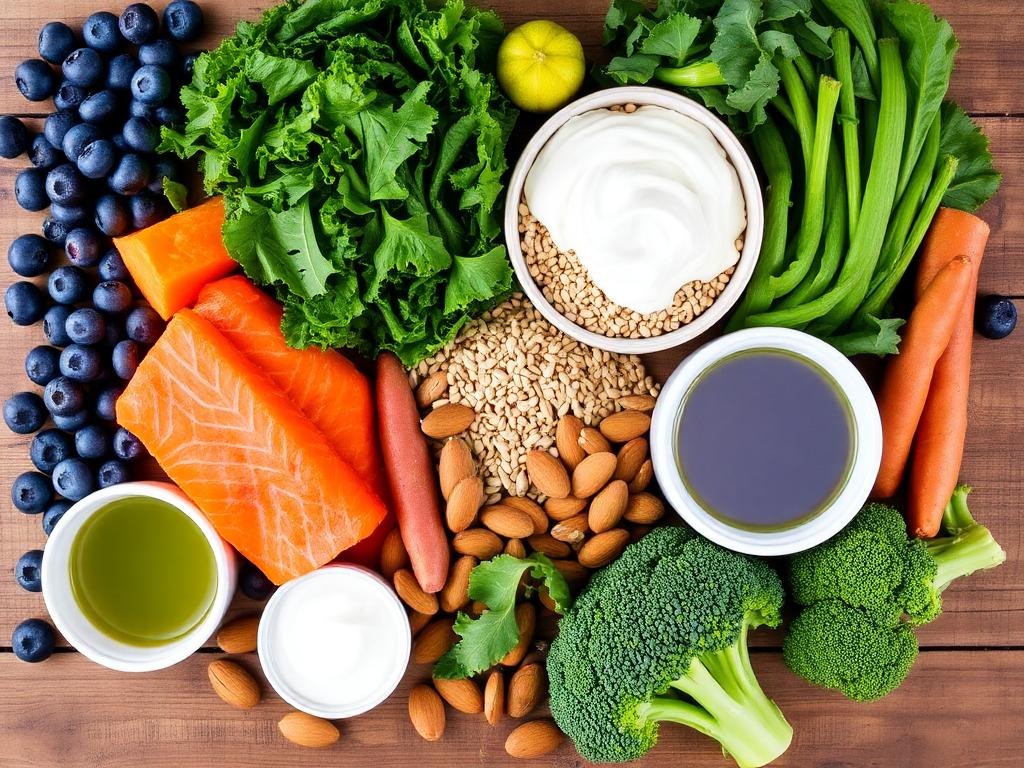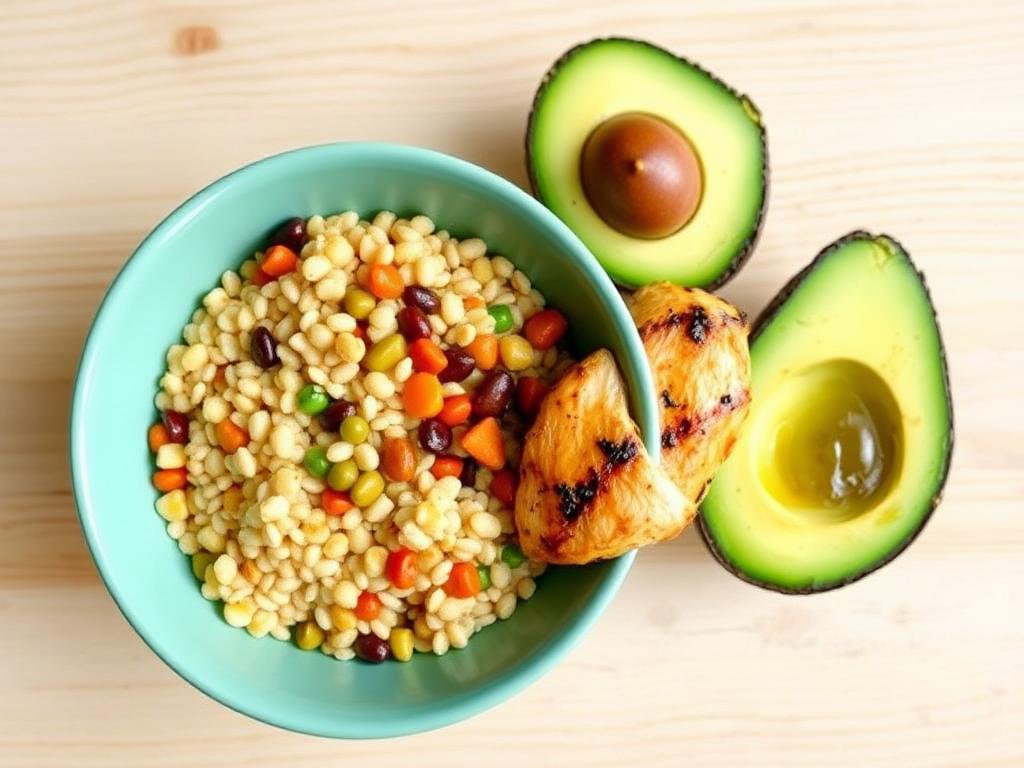
Healthy Substitutes for Common Ingredients
In today’s health-conscious world, many people are looking for healthier alternatives to the ingredients they use in their cooking and baking. Whether you’re trying to reduce calories, manage a specific health condition, or simply eat more mindfully, making small changes to your ingredient choices can have a big impact on your overall health. The good news is that you don’t have to sacrifice taste for health—there are plenty of nutritious substitutes for common ingredients that can help you create delicious meals without compromising on flavor or nutrition.
In this article, we’ll explore healthy substitutes for some of the most commonly used ingredients in cooking and baking.
1. Butter → Avocado or Greek Yogurt
Why It Works: Butter is high in saturated fats, which can contribute to heart disease when consumed in excess. Luckily, there are healthy substitutes that provide similar textures and flavors without the added unhealthy fats.
- Avocado: Avocado is packed with healthy monounsaturated fats, fiber, and various vitamins. It has a creamy texture that makes it a great substitute for butter in recipes like baked goods, spreads, and even as a replacement for butter in mashed potatoes.
- Greek Yogurt: Greek yogurt can provide the creamy texture you need, with added protein and lower fat content. It’s perfect for baking and cooking, especially when you want to reduce fat and add a dose of probiotics.
How to Use:
- Replace 1 cup of butter with 1/2 cup of mashed avocado or Greek yogurt.
- For baking, use a 1:1 ratio for butter replacement with Greek yogurt, but you may need to adjust cooking times slightly.
2. Sugar → Stevia or Honey
Why It Works: Traditional sugar adds empty calories to your diet and can contribute to weight gain and high blood sugar levels. Thankfully, there are healthier alternatives that can still satisfy your sweet tooth.
- Stevia: Stevia is a natural, no-calorie sweetener that comes from the leaves of the Stevia plant. It has a much sweeter taste than sugar, so you need only a small amount to sweeten your foods.
- Honey: Honey is a natural sweetener that provides vitamins and antioxidants. It also has a lower glycemic index compared to sugar, making it a better choice for people with blood sugar concerns.
How to Use:
- For baking, use 1/3 cup of stevia to replace 1 cup of sugar. You may need to add a little extra liquid to your recipe since stevia is not as moist as sugar.
- Substitute 1 cup of sugar with 3/4 cup of honey. Reduce the liquid content in the recipe slightly to balance the moisture from the honey.
3. White Flour → Almond Flour or Oat Flour
Why It Works: White flour is highly processed and lacks many of the nutrients found in whole grains. It’s also a poor choice for those following gluten-free or low-carb diets. Luckily, there are nutrient-dense alternatives that are naturally gluten-free and lower in carbs.
- Almond Flour: Almond flour is made from finely ground almonds and is packed with protein, healthy fats, and fiber. It’s a great choice for gluten-free baking, and it provides a rich, nutty flavor to your recipes.
- Oat Flour: Oat flour is made by grinding oats and is an excellent source of soluble fiber, which can help improve digestion and lower cholesterol. It’s great for gluten-free recipes and adds a mild, slightly sweet flavor.
How to Use:
- Replace 1 cup of white flour with 1 cup of almond flour or oat flour. You may need to adjust the amount of liquid in your recipe as these flours absorb moisture differently.
4. Cream or Heavy Cream → Coconut Milk or Cashew Cream
Why It Works: Cream is high in saturated fat, and many people are looking for dairy-free alternatives. Fortunately, there are plant-based substitutes that offer similar textures and flavors but are lower in fat and calories.
- Coconut Milk: Coconut milk is rich and creamy and can be used in savory dishes like curries or in smoothies. It has a subtle coconut flavor and provides a dairy-free option with fewer calories than heavy cream.
- Cashew Cream: Cashew cream is made by blending soaked cashews with water to create a smooth, creamy texture. It’s a fantastic dairy substitute for both savory and sweet dishes, adding a mild flavor and rich consistency.
How to Use:
- Use coconut milk as a 1:1 replacement for cream in most recipes. If you’re looking for a thicker consistency, use full-fat coconut milk.
- For cashew cream, blend 1/2 cup of soaked cashews with 1/2 cup of water until smooth. Use it as a substitute for heavy cream in sauces, soups, or desserts.
5. Mayonnaise → Greek Yogurt or Hummus
Why It Works: Mayonnaise is high in calories and fat, but there are lighter alternatives that still provide a creamy texture without all the added fat.
- Greek Yogurt: Greek yogurt is a great mayonnaise alternative due to its thick, creamy texture and high protein content. It’s ideal for salads, sandwiches, and even as a base for dressings and dips.
- Hummus: Hummus is a plant-based spread made from chickpeas and tahini, and it’s rich in fiber and healthy fats. It’s perfect for sandwiches, wraps, or as a dip.
How to Use:
- Replace mayonnaise with an equal amount of Greek yogurt or hummus in recipes. Both options provide a similar creamy texture but with added nutritional benefits like protein and fiber.
6. Potato Chips → Air-Popped Popcorn or Veggie Chips
Why It Works: Potato chips are a common snack, but they are high in unhealthy fats and empty calories. Luckily, you can easily swap them for healthier alternatives that still satisfy your crunch cravings.
- Air-Popped Popcorn: Popcorn is a whole grain that can be a healthy, low-calorie snack when prepared without butter or oil. Air-popped popcorn is high in fiber and can be flavored with herbs and spices for a tasty, guilt-free treat.
- Veggie Chips: Veggie chips, made from kale, sweet potatoes, or zucchini, offer a crunchy snack without the unhealthy fats found in traditional potato chips. Look for options that are baked rather than fried for the healthiest choice.
How to Use:
- Swap a serving of potato chips for a small bowl of air-popped popcorn. Season with your favorite spices, like garlic powder or paprika.
- Try vegetable chips made from baked kale, sweet potatoes, or beets as a crunchy alternative.
Conclusion
Making small, healthy swaps in your cooking and baking can have a big impact on your overall health. By using these simple ingredient substitutions, you can still enjoy your favorite dishes without compromising on taste or nutrition. Remember that portion control and balance are key to maintaining a healthy diet, so be mindful of your ingredient choices and aim to incorporate more whole, natural foods into your meals.


